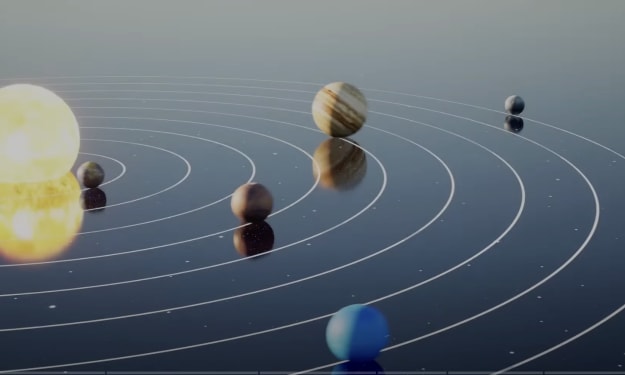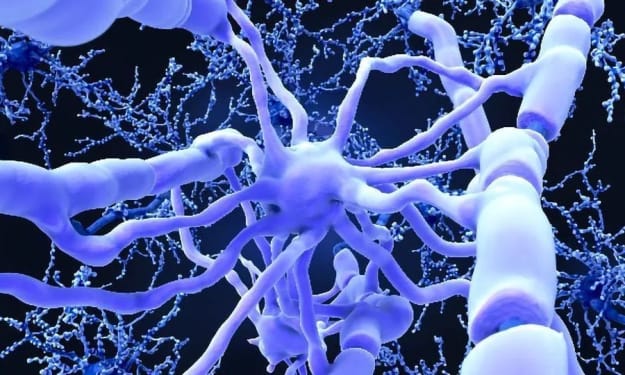
You step on a scale and look down at the number that shows up. What that number is telling you is how much force the mass of your body exerts on the ground. It's simple Newtonian mechanics: Force equals mass times acceleration. Gravity exerts the acceleration, and the mass of your body creates a force - that's your weight.
Weight is probably easy enough to understand, but mass is a little more nebulous. If you were floating in space far away from Earth, you would essentially have no weight, but you would still have the same mass as you did standing on that scale. Where does the mass of your body come from? Well, the mass comes from all the atoms in your body that individually have a mass.
Where does an atom's mass come from? Well, this is interesting because the mass of an atom at its core is really energy. In fact, all mass is energy. This is exemplified in Einstein's famous mass-energy equivalence equation: E=MC². Mass is interchangeable with energy, and the constant c² or speed of light squared is the conversion factor.
So where is the energy of the atom coming from? Well, 99% of the mass of an atom is contained in the binding energy within the nucleus. This energy is a result of one of the four fundamental forces of nature called the strong force, which keeps the protons and neutrons glued together in the nucleus of atoms. That's where most of your body's so-called mass resides. But it turns out that some of your mass, about one percent, is contained in the mass of the subatomic particles that make up the atoms. These are the electrons that form a cloud around the nucleus, as well as the quarks that make up the protons and neutrons.
So now the question is: how did these subatomic particles have an intrinsic mass? If mass is energy, then what is the mechanism that confers this energy to these fundamental particles? This is where the Higgs field comes into the picture. This field is everywhere in space-time, but most explanations of how this field confers mass can't avoid getting highly technical, talking about symmetry breaking and other advanced mathematical concepts.
In this video, I'm going to attempt to explain how the Higgs field confers mass in an intuitive way, so whether you're a math geek or not, you will hopefully get a very good intuitive understanding of what's really going on. That's coming up right now.
Before we get into it, though, I want to thank our sponsor Blinkist that helped make this video possible. This is the one app that saves me more time than any other. Now, as you might suspect, I'm a voracious reader. Blinkist gives me access to over 5,500 non-fiction books and podcasts that I can read or listen to in only about 15 minutes. It's not a replacement for reading the whole book, but it allows me to understand the most important things from them.
For example, I just finished listening to a book called "The Latte Factor." It's about how making small changes in your life can result in huge outcomes over time, like drinking less latte. What I learned is how life is really a series of baby steps that may not have an immediate payoff but over time can help you achieve big goals. And my goal this year is to improve my mental and physical health. Blinkist will help me reach that goal, and it can do the same for you.
About the Creator
Enjoyed the story? Support the Creator.
Subscribe for free to receive all their stories in your feed. You could also pledge your support or give them a one-off tip, letting them know you appreciate their work.





Comments
There are no comments for this story
Be the first to respond and start the conversation.